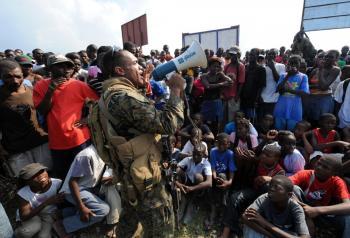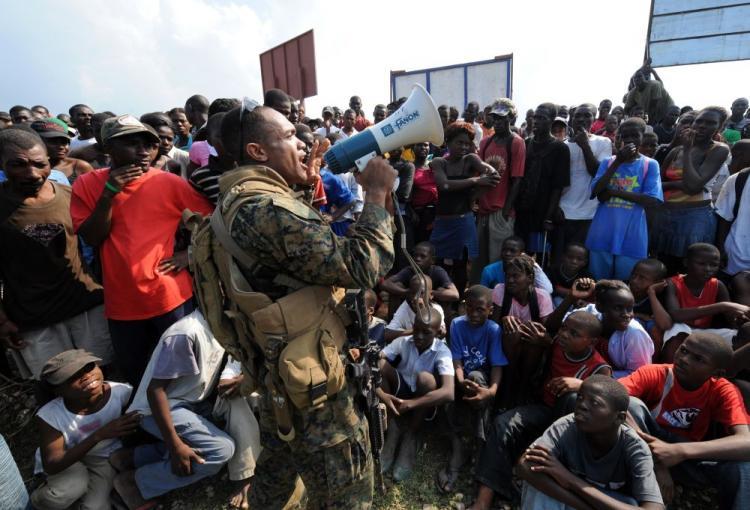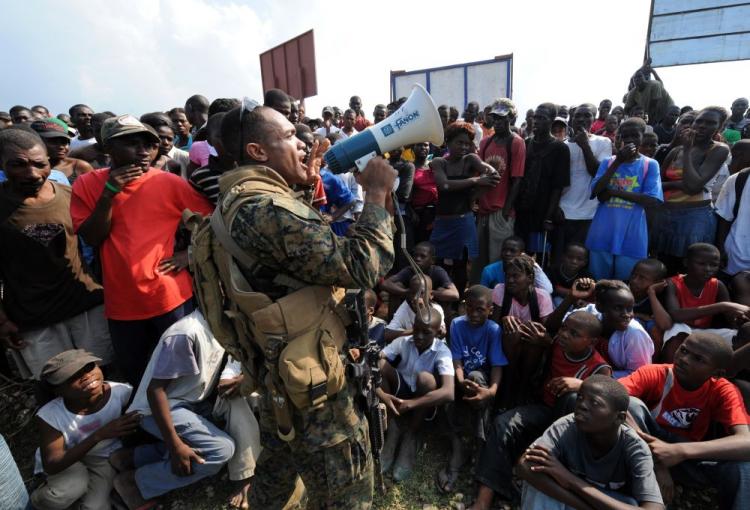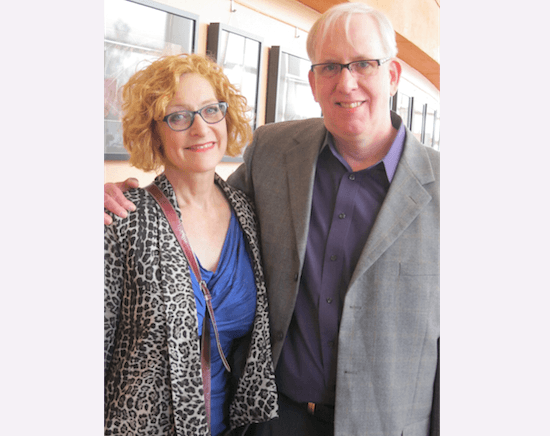Haiti Shaken by 5.9 Aftershock
Haiti was struck by another heavy 6.1 aftershock on Wednesday.

Haitian earthquake victims listen to a U.S. Marine in Leogan on Jan. 20. The logistics of transporting needed supplies is an ongoing dilemma in Haiti which was hit by a 6.1 magnitude aftershock early Wednesday morning. Jewel Samad/AFP/Getty Images
|Updated:





